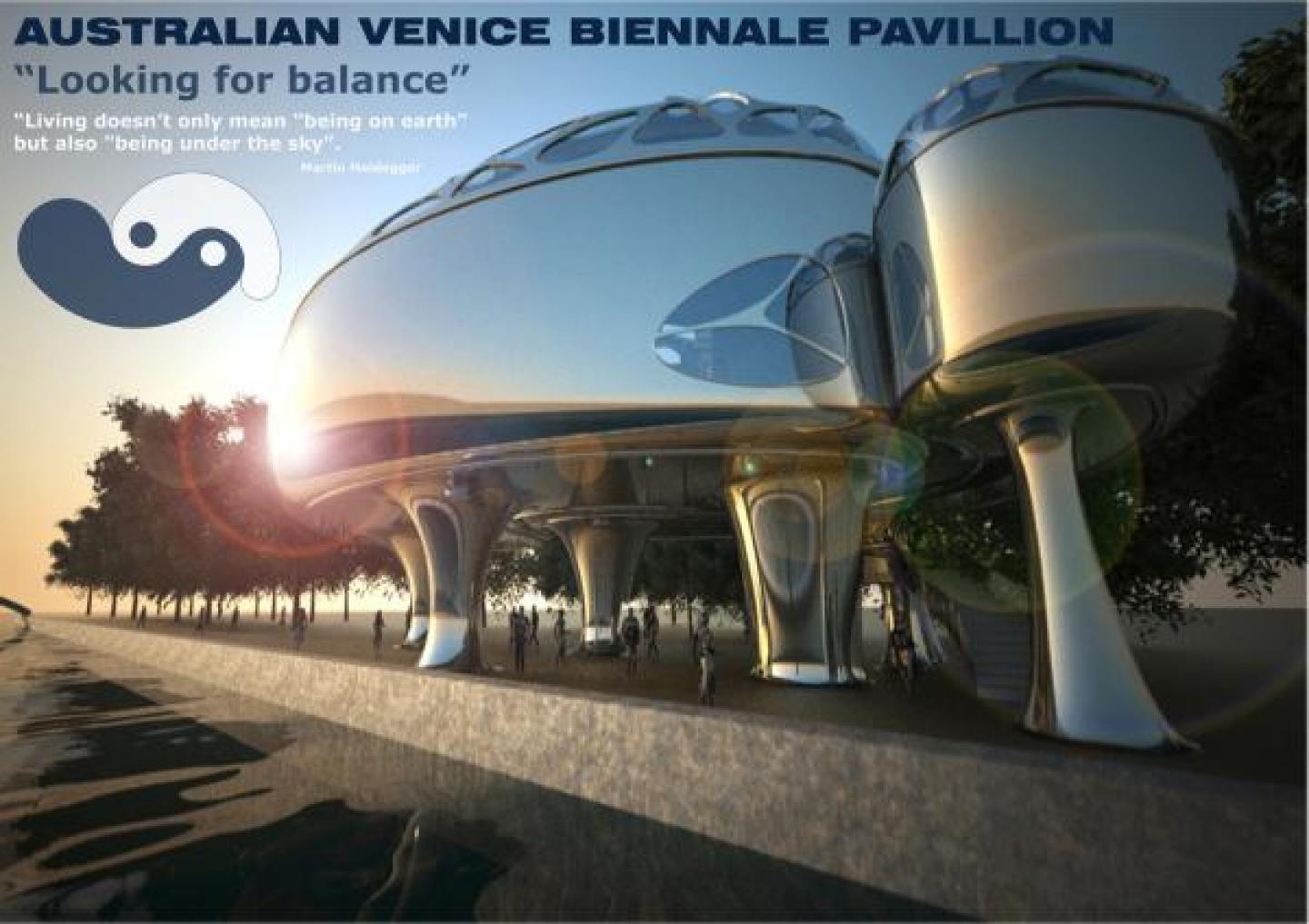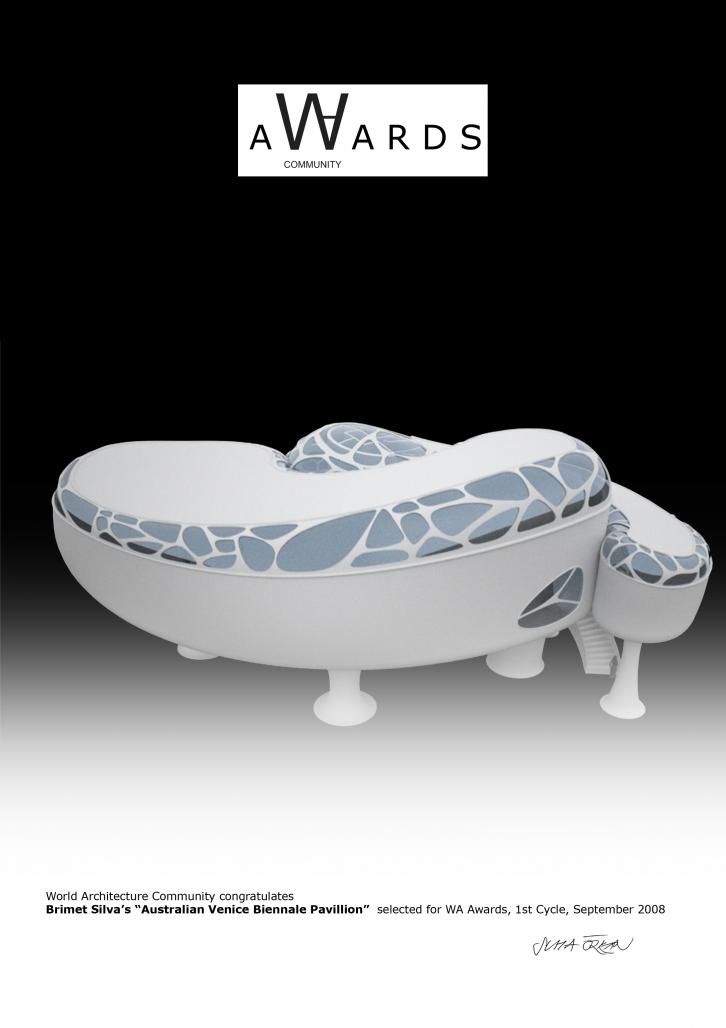“Looking for Balance”
The equilibrium among: time& space _ground & air_ light & shadow _ full & empty _ natural light & artificial light _ inside & outside_dream & reality.
“Living doesn’t only mean “being on earth” but also “being under the sky”
Martin Heidegger
With these premises my strategy is clear: to liberate the ground plane, to construct a covered square opened to the river and surrounding green landscape, as well as to find the balance among different elements that compose the Venice’s pavilion.
Thus, the ground plane is defined by the presence of the shadow of the emergent building. This square, conceived as a distribution point, works not only like a meeting area of the different directions, but also like a privileged space for sculptures, art’s installations and performances.
The pavilion itself is conceived as an object that levites with six organic pillars that support it. Two of these elements, work like vertical access. One lift for the visitors and another one for technical transport of art’s works. We can find on same level another vertical access: a staircase, that transport us to above level, inside of the pavilion.
“Looking for the balance”. Inspired in the equilibrium of the shapes and concepts, the project results of the fusion between two parts. The first one is destined to lobby, reception, book’s area, offices, staff facilities, storages and allow us to have access to the black box {on second floor}. The second one is a flexible exhibition area that allows multiples uses. On same area, suspended on air by two structures, there is the black box, a place for installations or video projections.
Inside the building we predominates the white colour, with some visual neon´s green light games, looking for the balance between natural light and artificial light. The openings allow wonderful views for the surrounding landscape, creating a visual game between the outside and inside.
At daytime the volume expresses different chromatic appearances. The New Pavilion is a mirror of the time and space. That, it’s only possible because the outer nickel skin unifies both parts, and gives a strong, mutable and unique shape.
2008
2008
Australian Venice Biennale Pavillion by Brimet Silva in Italy won the WA Award Cycle 1. Please find below the WA Award poster for this project.

Downloaded 571 times.
Favorited 2 times








